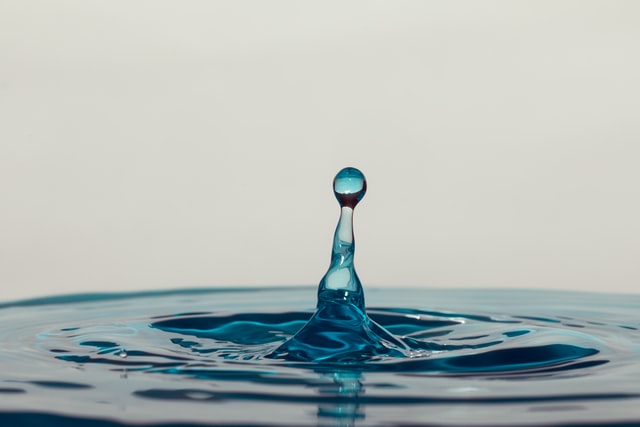
Tour One: The Environment
Water Purity
With 187,888 lakes, Finland is a country with plenty of water! If you wanted to spend one day at each lake in Finland, all the round trips would take 515 years. That would be an “välä kallis” trip! (Välä kallis is Finnish student slang for “extremely expensive”).
Most lakes in Finland are actually quite small. The largest lake would be the same size as one-fifth of Lake Ontario, which is the smallest of the Great Lakes. If you added it all together, the water from all the Finnish lakes could be poured into Lake Ontario SEVEN times!
Another common feature of Finnish lakes is the massive number of islands. Some of the largest lakes contain more than 1,000 islands each. If you add up the total number of islands in Finland, you’d get 98,000. And there are another 80,000 islands along Finland’s coastline on the Baltic Sea.
The water quality in Finnish lakes is usually first-rate. In fact, you can drink the water in most lakes, although all towns purify water that’s pumped for household use. Pulp (what paper is made of) and paper mills used to cause
water quality problems, but nowadays they purify their wastewater very efficiently. However, some lakes suffer from water pollution due to agriculture, fish farming, algae during summer months and other natural reasons.
You may be asking yourself, “Does the lake water ever get warm in a country located so far north?” Well, the normal temperature for surface water in the lakes of southern Finland can reach 65-70 degrees Fahrenheit in July.
Even in Lapland 70 degrees is possible, although it isn’t reached each summer. Obviously, swimming in the lakes and lakeside recreation is very popular during the summer months.
Finland has about 650 rivers, in all different sizes. Their total length is 14,000 miles. If you paddled one mile per hour, you would need 38 years to paddle down all Finnish rivers from end to end.
The total amount of water running in the Finnish rivers is, an average of 110,000 cubic feet per second. This means that the water resources of Finland are about five million gallons per capita (or per person) per year — the largest of any European Union country. For example, in Germany the corresponding figure is only 250,000 gallons. In the United States, per capita water resources are about two million gallons per year, but if Alaska is excluded, the figure is much smaller.
Canada’s water resources per capita are four times larger than the water resources of Finland.
Finland also has plenty of groundwater (groundwater is formed mainly in springtime from melting snow and is an underground storage system). Actually, more than half of the Finnish population uses groundwater because the quality of groundwater is usually very high. The most important groundwater resources are found in sand and gravel deposits, particularly in the two Salpausselkä ridges that cross the whole of southern Finland.
The Finnish coastal waters are salty like the whole Baltic Sea. The concentration of salts is due to rather low water exchange with the Atlantic and to the numerous rivers flowing into the Baltic. Actually, the Gulf of Finland and the extensive archipelago zones along the Finnish coast are susceptible to pollution.
Did you know that in Finland, water power was used to drive mills as early as the 14th century? The Iron industry then harnessed energy from rapids in the 17th century. Today, about one fifth of electricity used in Finland is generated with hydropower.
A total of 94 fish species have been found in Finnish waters. Some of the most important fish caught in the inland waters include Vendace, Pike and Perch. In the sea areas, Baltic Herring accounts for aboutthree-quarters of the catch. Fishing is practiced for commercial purposes, for private needs and for fun, just like in the U.S.!
The Finnish waterways and the Baltic Sea are widely used for recreational purposes, particularly during the summer season. Vacationers spend their time by the waters hiking, boating, swimming and fishing, among other things…sounds like camp, right?
Boating in all its forms is very popular activity. There are around 750,000 boats in Finland. Enough for all the Finns to be on a boat at once! There are some 300,000 motorboats, 20,000 sailboats and 50,000 canoes — so many choices!
The quality of the water environment is more and more important for peoples’ well-being. Growing use of waterways leads to changes in the water bodies and their ecology. Extensive research and strict legislature are needed to guarantee clean and beautiful water for Finland and future generations.
QUIZ
- How long would it take to visit all Finnish lakes?
- 515 hours
- 515 days
- 515 months
- 515 years
2. How long would it take to paddle all Finnish rivers?
- 38 hours
- 38 days
- 38 months
- 38 years
3. What is true of hydropower in Finland?
- It has been used for 7,000 years
- It is harnessed to make electricity
- All iron comes from it
- It is used in sail boats
4. How many rivers does Finland have?
- 65
- 6500
- 560
- 650

